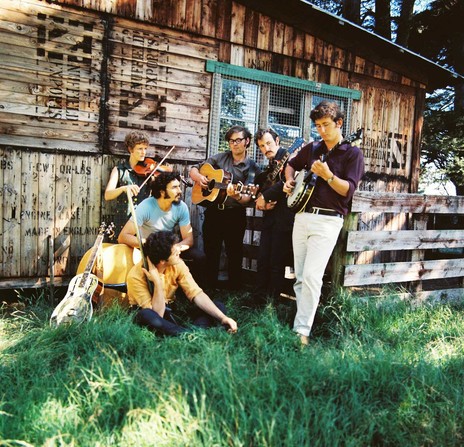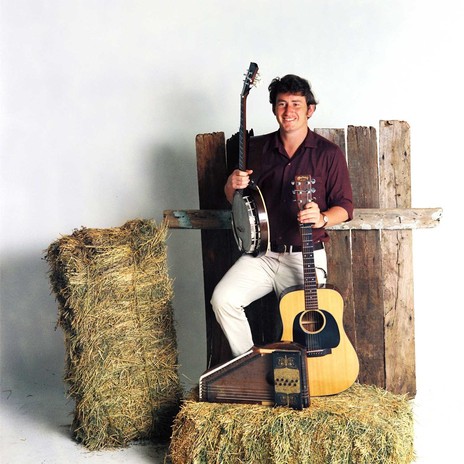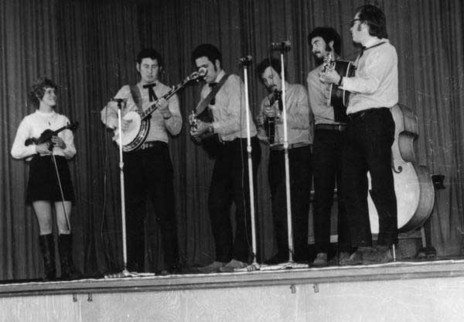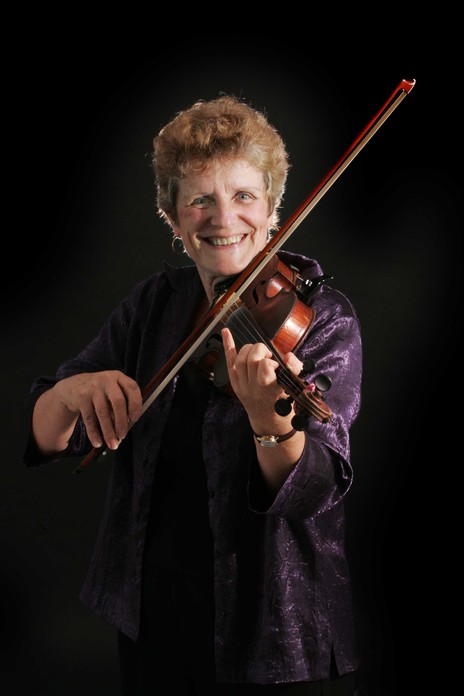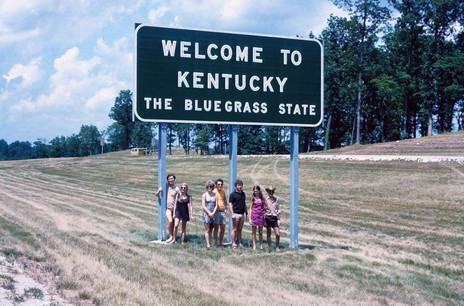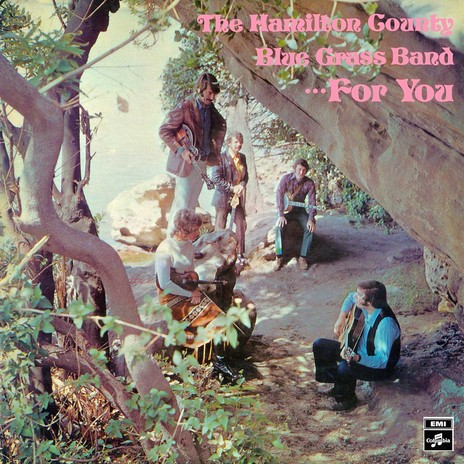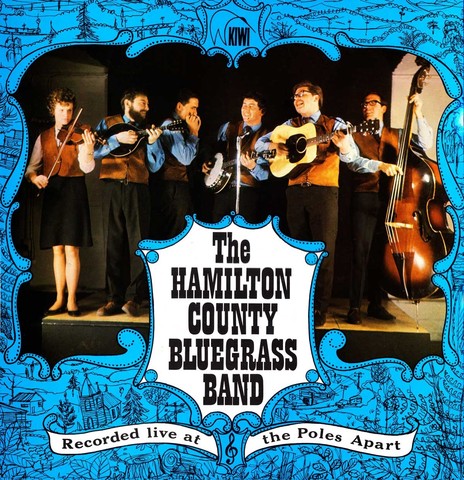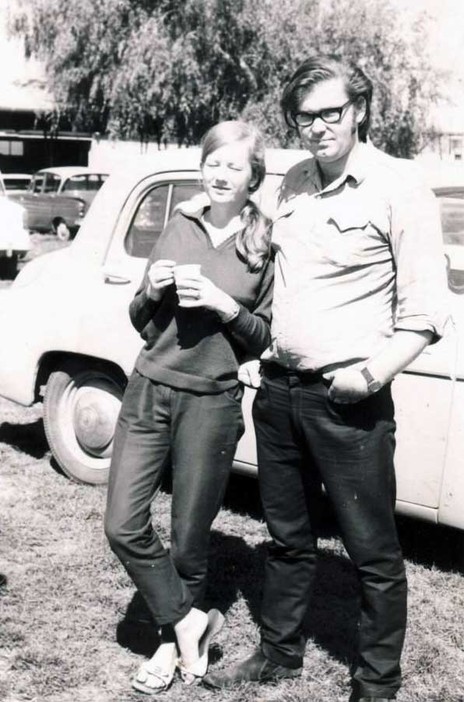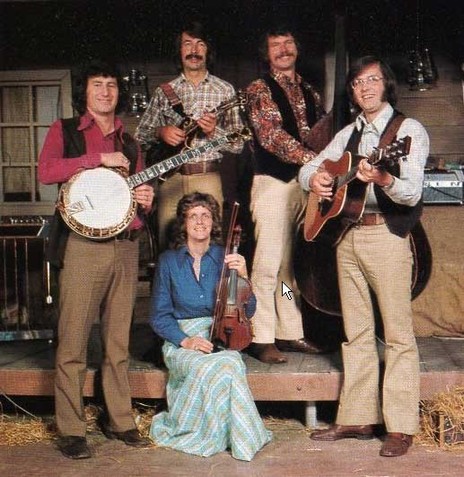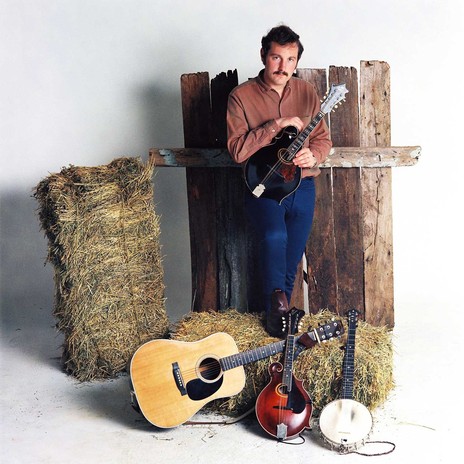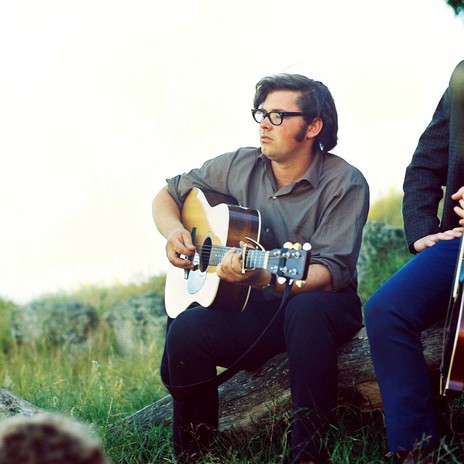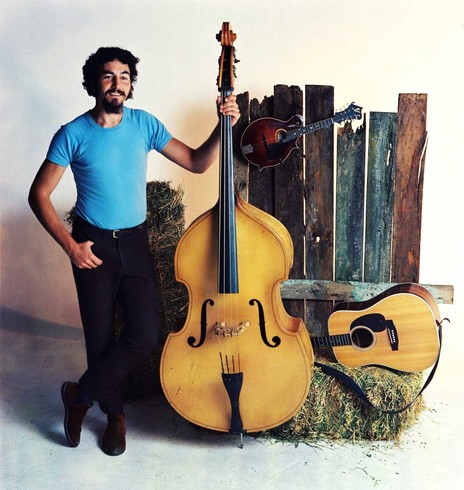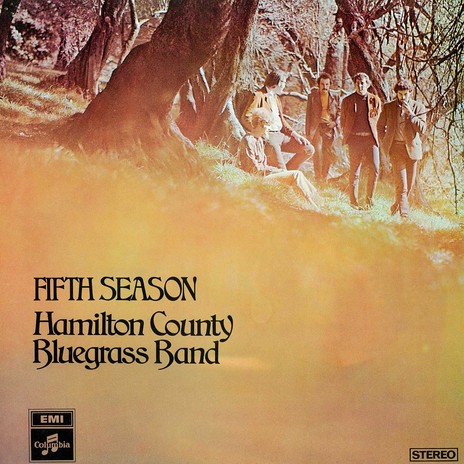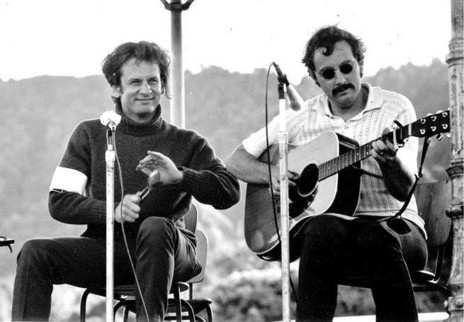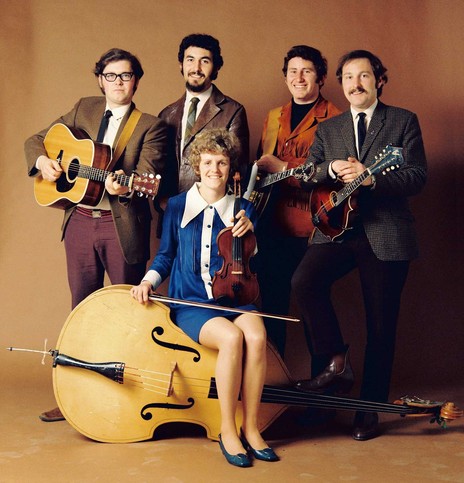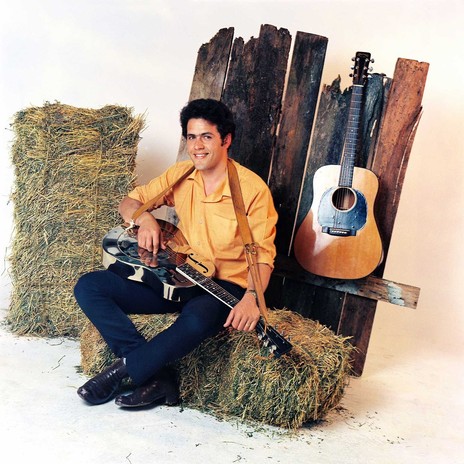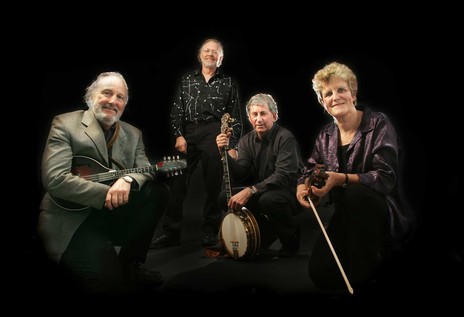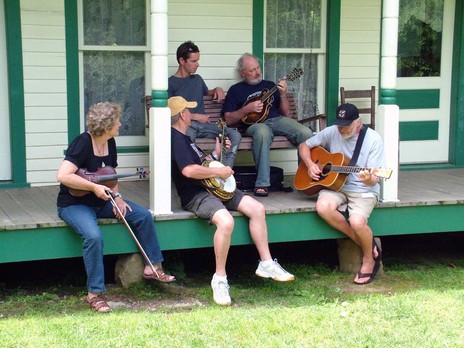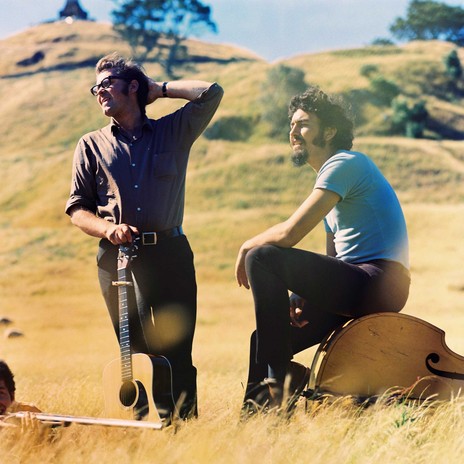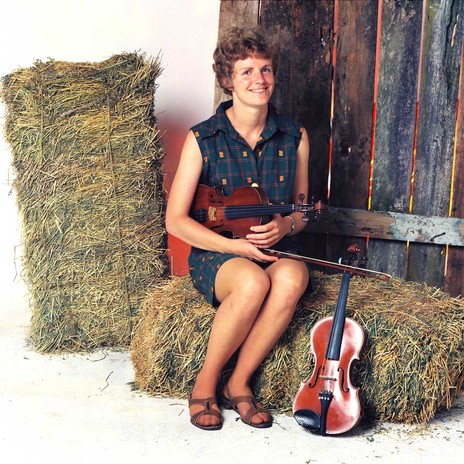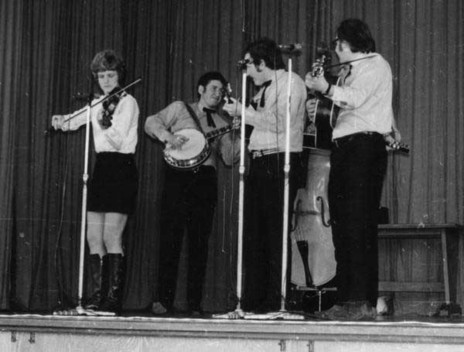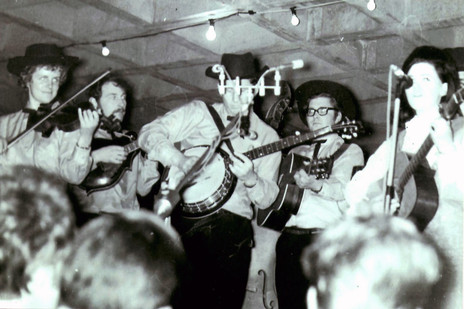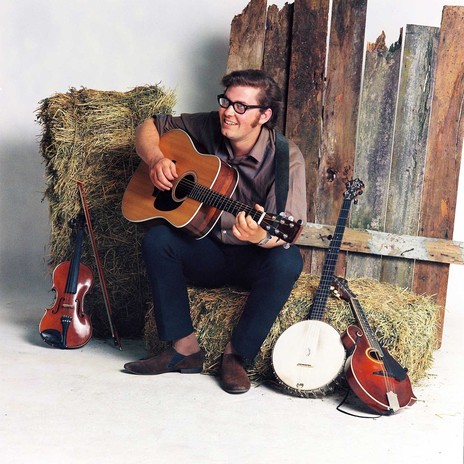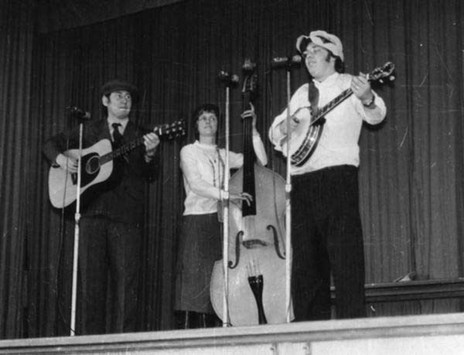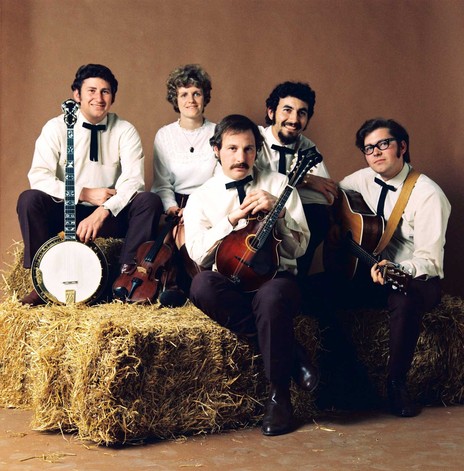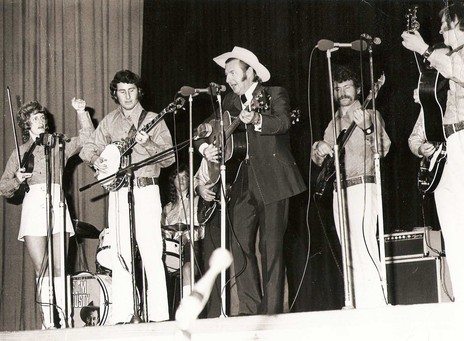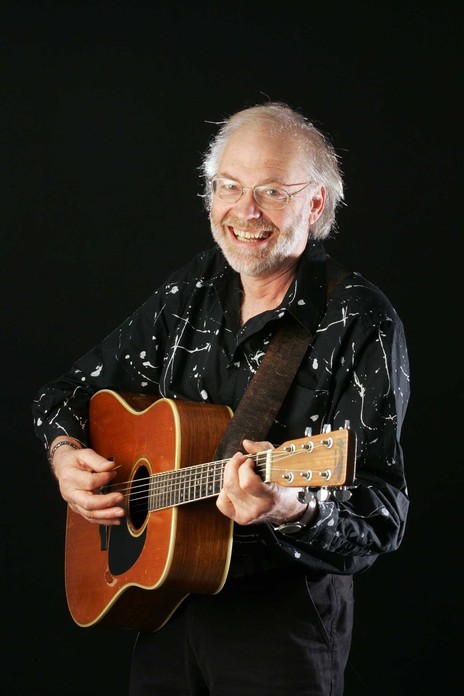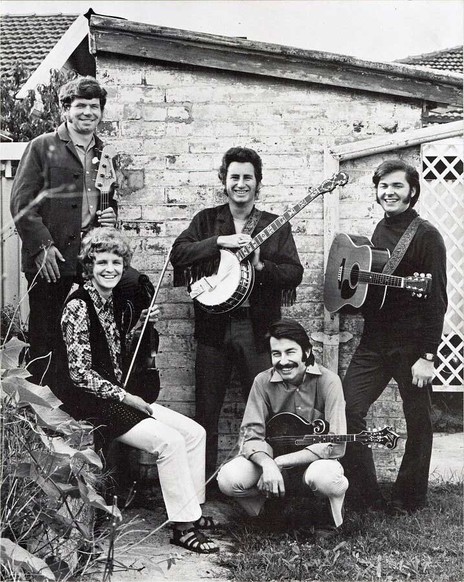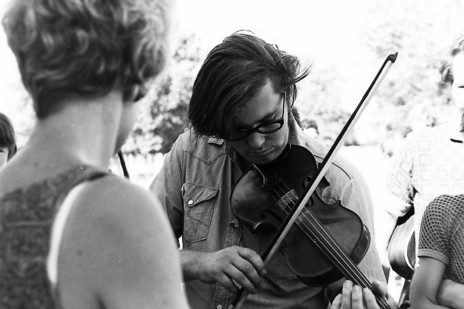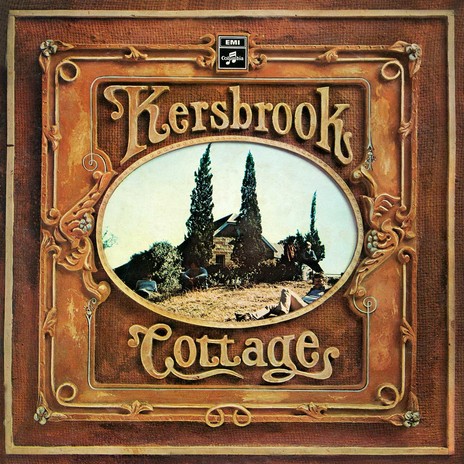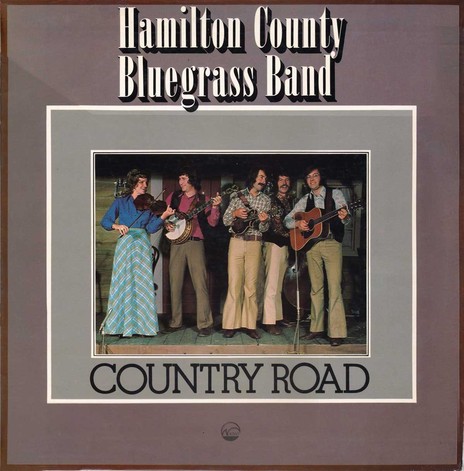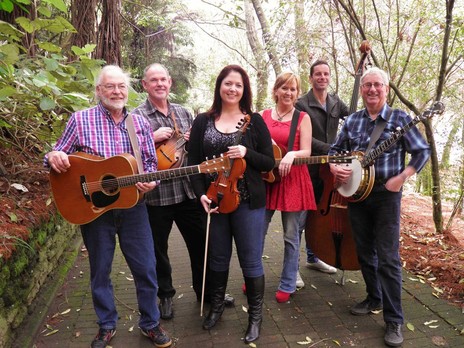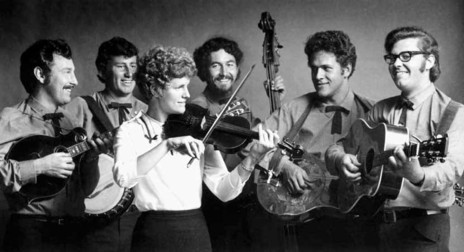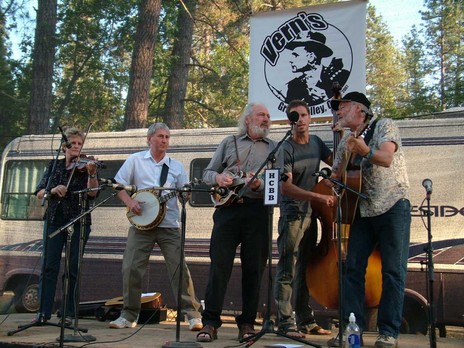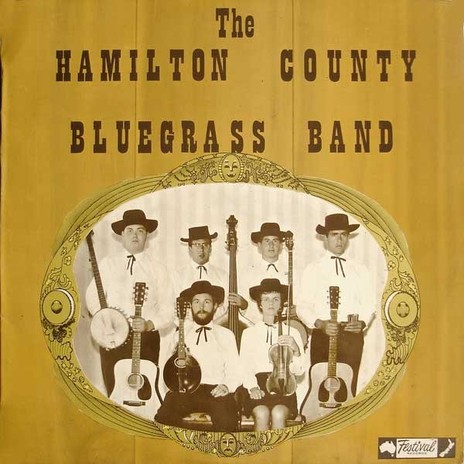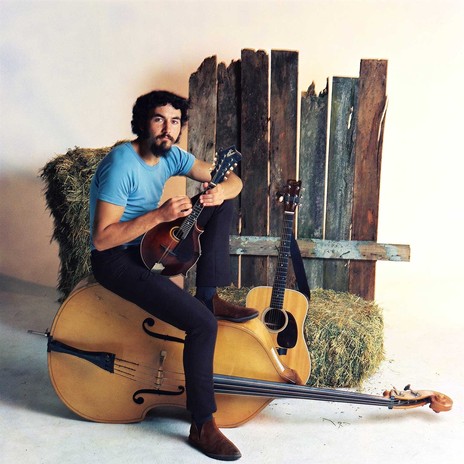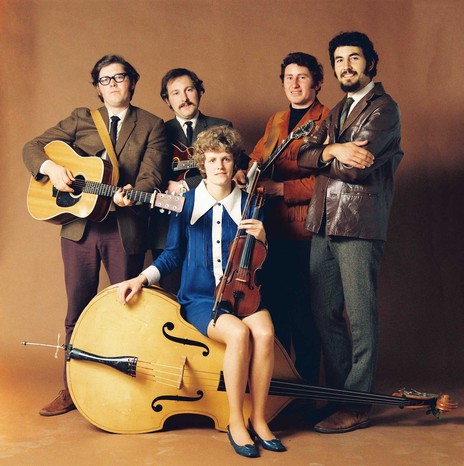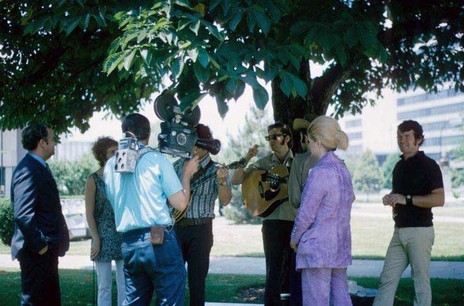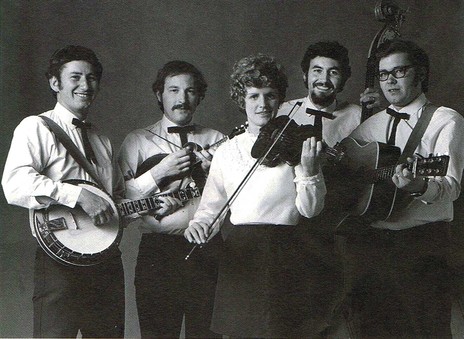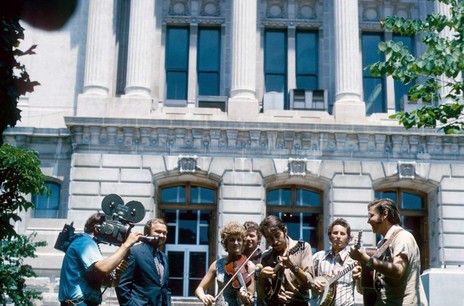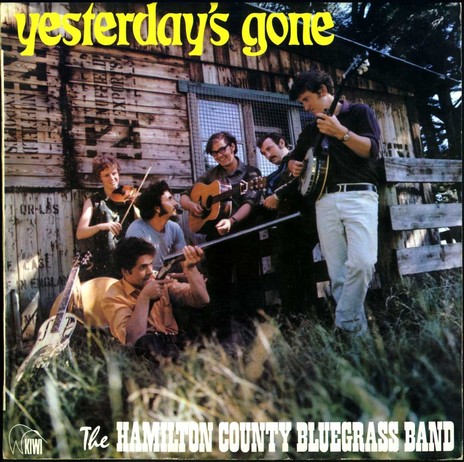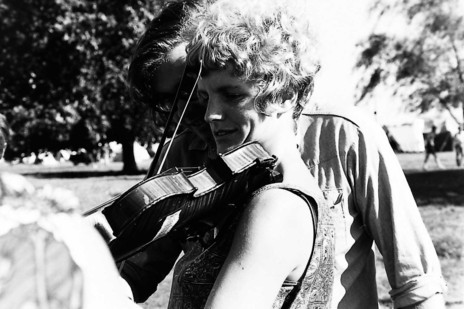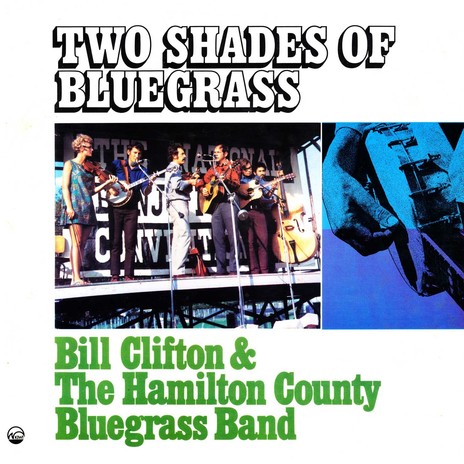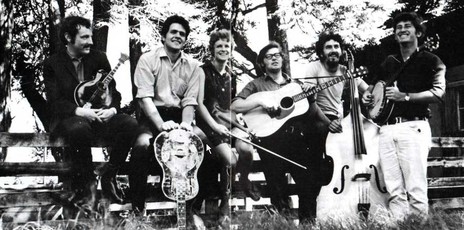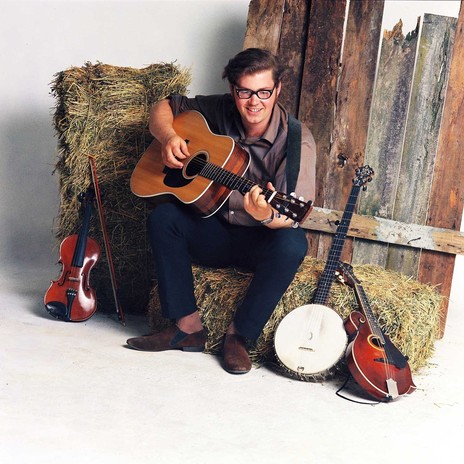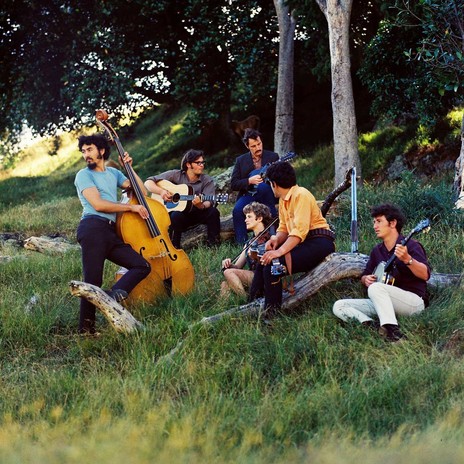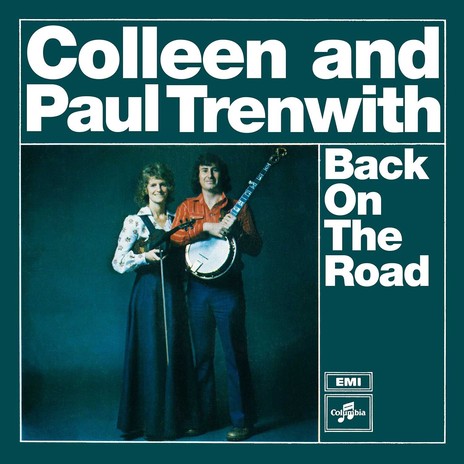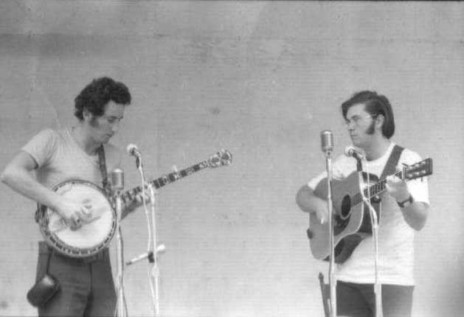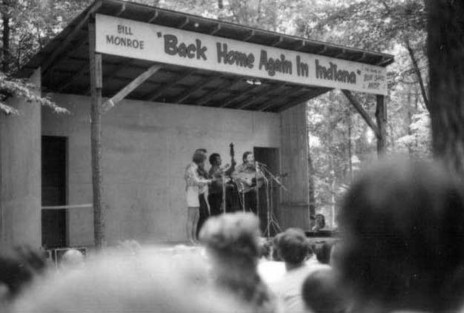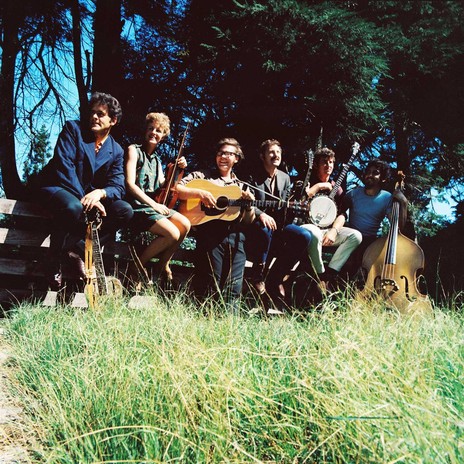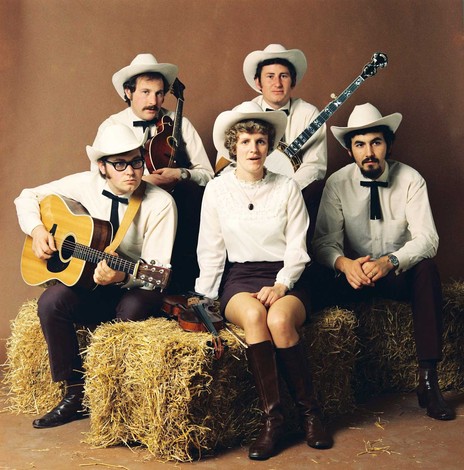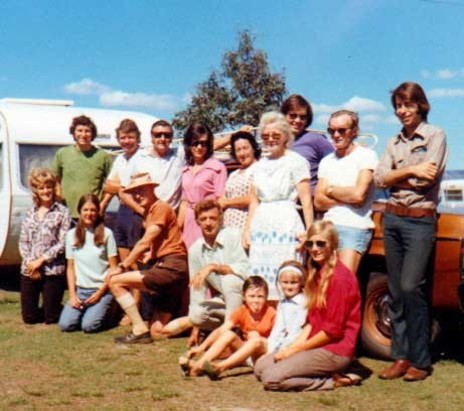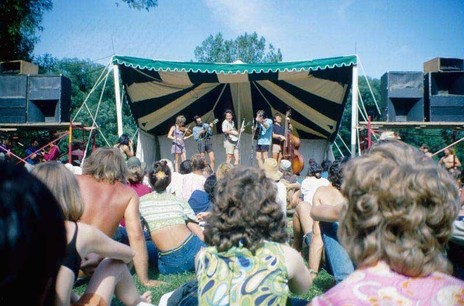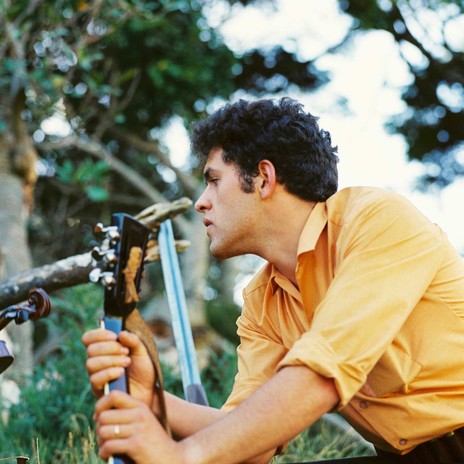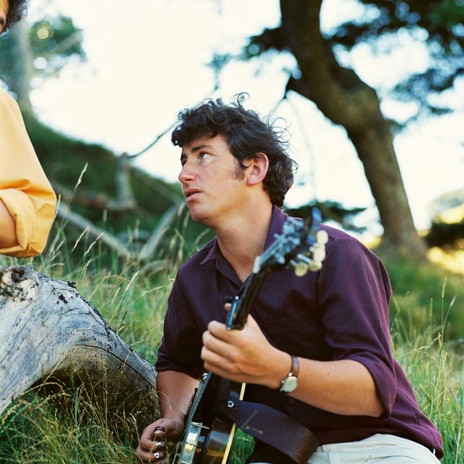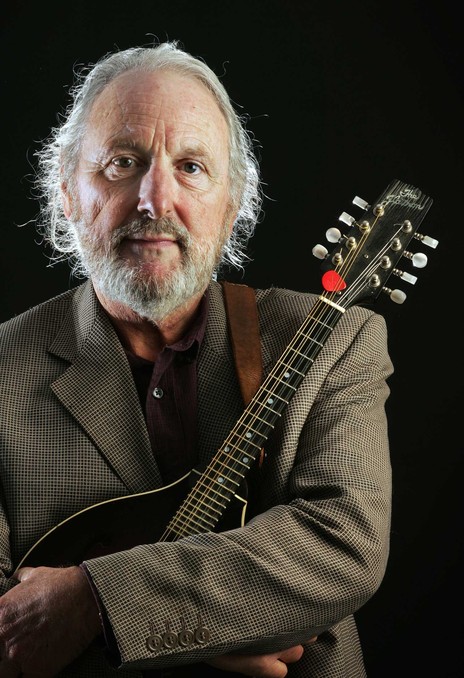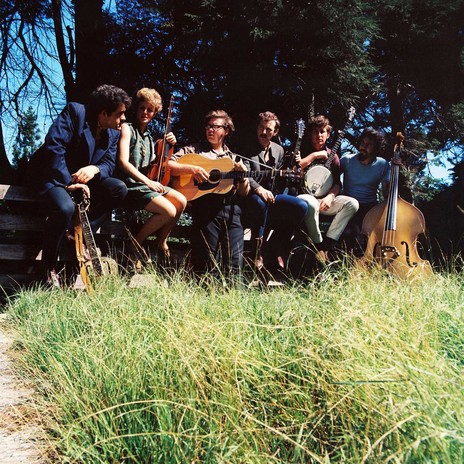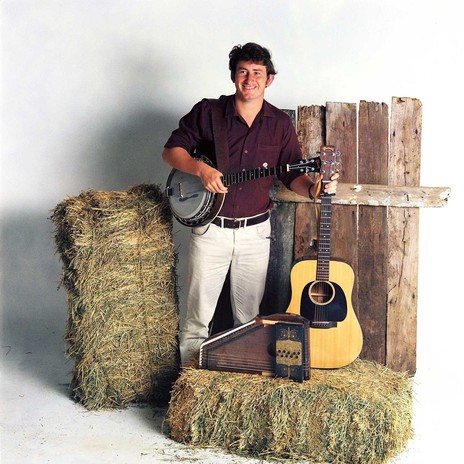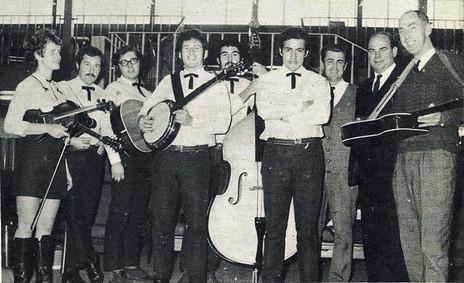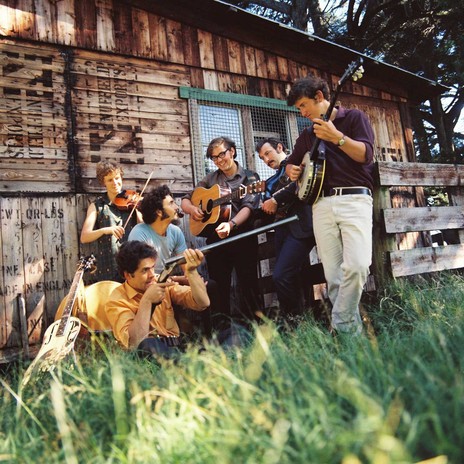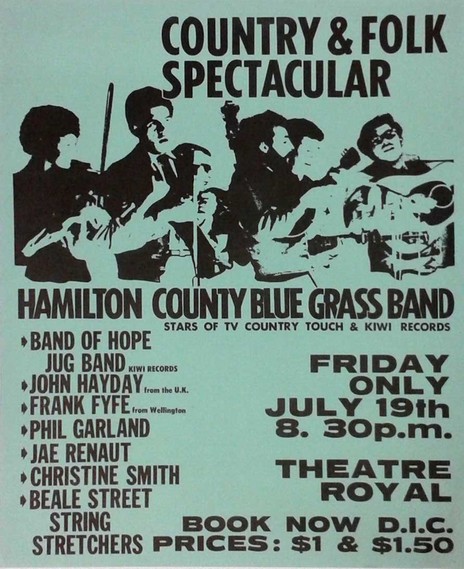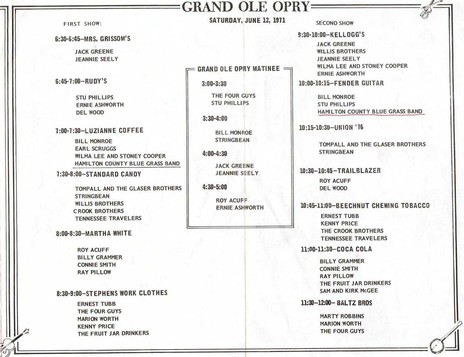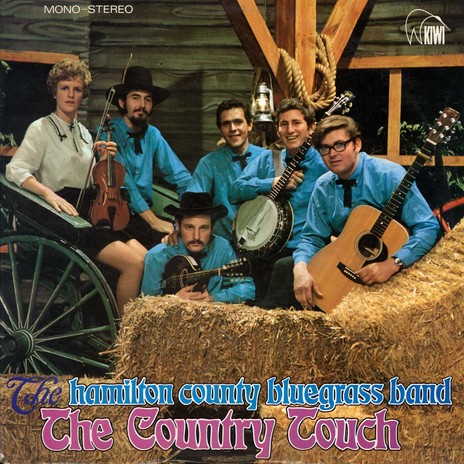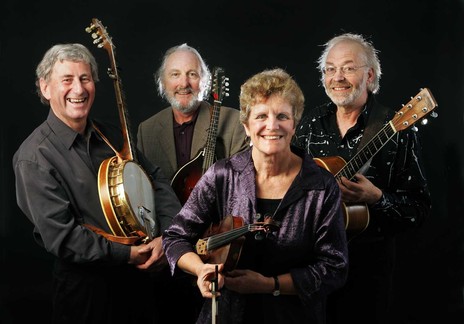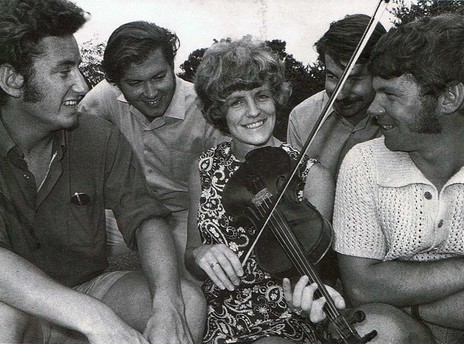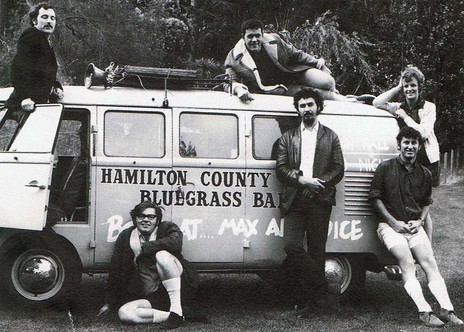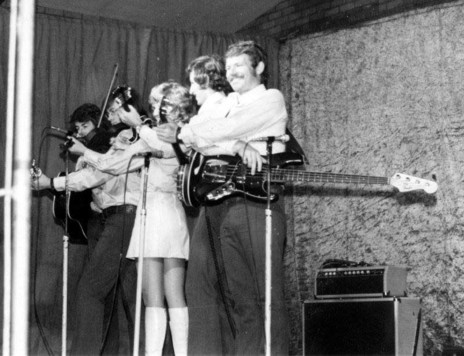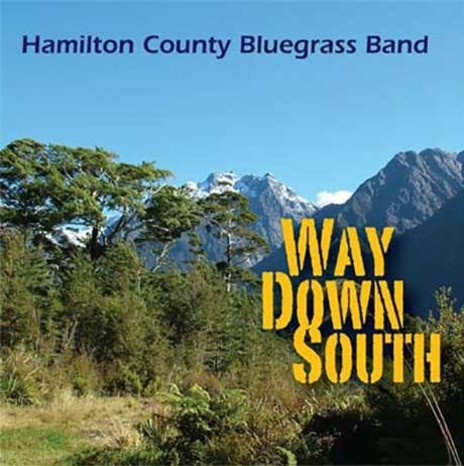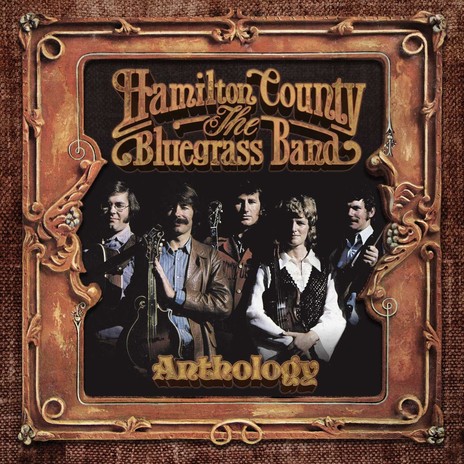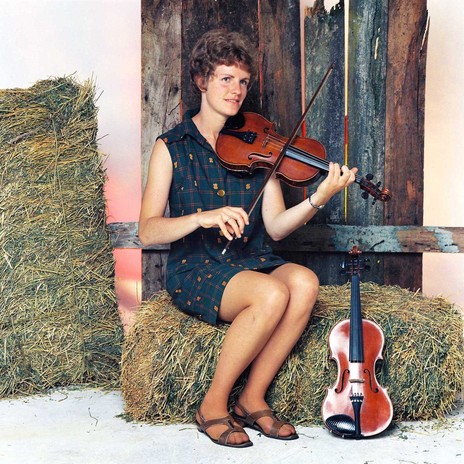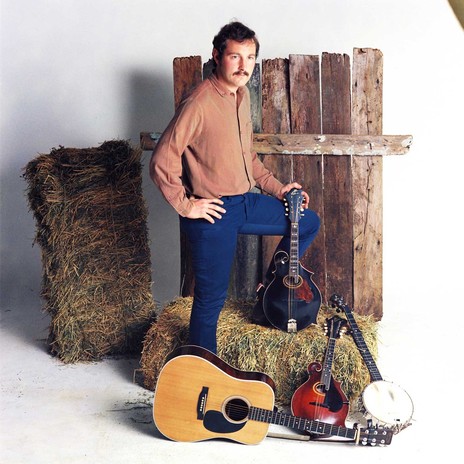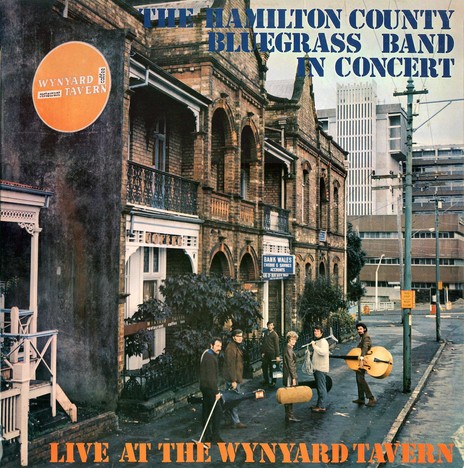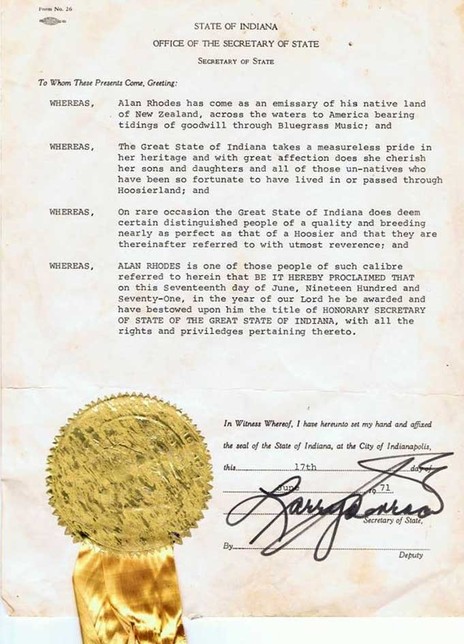Their early live appearances carried a hint of Goon Show humour, but there was no joking when it came to the close harmony singing and the music. Their sound was built upon the clear lead vocals of Alan Rhodes and the nimble mastery of banjo player Paul Trenwith and fiddler Colleen Bain, who would marry during the band’s heyday.
Novice four-string banjo picker Paul Trenwith met learner guitarist Alan Rhodes at Fairfield College, Hamilton, in 1962 and began practising the folk styling of The Kingston Trio and The Brothers Four. Trenwith noticed the groups utilised five-string banjo and when he left school at 18 he bought himself a five-string Framus.
The young men joined a local folk club and began playing with like-minded musicians. When The Beverly Hillbillies came to New Zealand television with Earl Scruggs’ banjo driving its ‘Ballad Of Jed Clampett’ theme song, Trenwith had found his calling.
Whenever he and Rhodes would perform their new bluegrass repertoire at the folk club, one young lady would boast about the guitar-playing skills of her boyfriend, Dave Calder, who was at Auckland University. One day in March 1966, he arrived in Hamilton with his guitar.
Although from the Waikato, Calder was studying at Auckland to become a teacher. Living at O’Rorke Hall, he would carry his guitar to the Uptown Gallery in Upper Queen Street, which was a quick walk to the Wynyard Tavern in Symonds Street where there were fantastic Sunday night folk concerts. Calder and university friend guitarist Len Cohen founded FolkSoc, the Auckland University Folk Music Society, and performed as a duo.
At the time Calder hitchhiked to Hamilton and met Paul Trenwith and Alan Rhodes, the pair had obtained a record by Missouri bluegrass band The Dillards. Calder was captivated by the mandolin playing of Dean Webb and was soon playing the instrument with his new friends as often as he could. The trio appeared as The Muleskinners at the 1966 Massey University Arts Festival.
Back in Auckland Calder introduced Len Cohen to the music of The Dillards and they hooked up with Canadian upright bass player Sandy McMillin, who was also at the university.
In September, a friend tipped Paul Trenwith off about Colleen Bain, a classical violinist who was studying a specialist music course at the Hamilton Teachers College. Bain adapted quickly to the bluegrass style, and with Trenwith and Calder’s natural aptitude on their instruments and Calder’s ability to arrange harmonies thanks to his early years in church choirs, an authentic-sounding bluegrass unit was born – Bain (fiddle), Trenwith (banjo), Calder (mandolin), Alan Rhodes (guitar), Len Cohen (guitar, mouth harp) and Sandy McMillin (upright bass).
Part of their repertoire was a Dillards fiddle tune called ‘Hamilton County’, and because half of them were from Hamilton they became The Hamilton County Bluegrass Band.
Trenwith would regularly buy bluegrass albums by mail order from County Sales in New York, and spurred on by the crazy names of the old-time American string bands in the catalogue, the new band went out around Auckland under various guises such as The Waikato Valley Marmalade Drippers or Aloysius Fingerpicks & His Aristocratic Skillet-Lickers with Fiddling Mother Colleen.
It wasn’t until they caught the eye of entrepreneur Phil Warren’s James Productions recording arm that they had to settle on a permanent name. Part of their repertoire was a Dillards fiddle tune called ‘Hamilton County’, and because half of them were from Hamilton they became The Hamilton County Bluegrass Band.
That was also the name of their first LP, recorded in Auckland in January 1967, a James Production licensed to Festival Records. Their second LP, Recorded Live At The Poles Apart, was captured in the middle of the year and appeared on the Kiwi label. Sandy McMillin finished his studies and returned to Canada; Lyndsay Bedogni replaced him in time for the one-off RCA Victor single ‘Barefoot Nellie’ b/w ‘I’ll Never Hold You In My Arms Again’.
The band’s Auckland stomping ground was the Poles Apart Folk Club in Khyber Pass Road, run by Londoner Simon “Curly” Del Monte. When Colleen Bain finished at Hamilton Teachers College and took up a teaching post in her home town of Wellington, Del Monte suggested he become the band’s manager and that he would pay to have Bain fly NAC every other weekend so they could continue to play at the club.
In the audience there one night was NZBC television producer Bryan H. Easte who approached the band and offered them the role of backing band on his new weekly music series The Country Touch, which was to be hosted by internationally acclaimed NZ-born singer, hypnotist and showman Tex Morton.
The moment The Country Touch aired on the nation’s only TV channel, The Hamilton County Bluegrass Band became an overnight sensation, especially their shy, curly-headed fiddle player Colleen Bain. Each week they would perform a song of their own as well as backing Morton and a number of New Zealand singers including Rusty Greaves, Ken Lemon, Christine Smith, Rex Franklin and Val Elliott.
Their next album was also called The Country Touch, recorded by Kiwi’s John Ruffell and Robin Gummer on the weekends during the show’s filming in the middle of 1968. The band took advantage of The Listener photographer for cover shots on the TV show’s set.
By the time of the sessions, Len Cohen had taken up dobro after hearing the instrument on Flatt & Scruggs records. The fact there were no dobros available in New Zealand was no hindrance, Cohen simply acquired a National guitar, cranked the action up and learnt to play with a slide to emulate the sound.
At the beginning of 1969, they turned professional. All newly qualified – Paul Trenwith had passed his draughtsman exams, Colleen Bain and Len Cohen were qualified teachers, Dave Calder had his Masters in French, Alan Rhodes was a mechanic and Lyndsay Bedogni had got his degree – they felt the time was ripe.
Aided by Cohen’s natural managerial flair, they set up a tour of Northland and the Waikato, filling halls in the likes of Rawene and Kaeo under their own steam – 30 concerts in 32 days. National tours with Australian country star Slim Dusty and American-born British folk singer Julie Felix followed as well as continued appearances at the National Banjo Pickers’ Conventions.
In the middle of the year they recorded their fourth album, Yesterday’s Gone, at Mascot, produced by John Ruffell and released on Kiwi. They used the pseudonym Count Hamilton’s Fenurl for the Labour Party campaign song ‘Your Turn Now’ released on HMV. Calder and his wife Andrea “Panda” Calder released the LP Come In Stranger on Kiwi under the name David and Panda.
Promoter Benny Levin put the band on a couple of summer package tours with the newly solo Larry Morris, The Challenge, Christine Smith and Shane. They would huddle around the microphones with their acoustic instruments, sandwiched between electric acts with drums, but still be well received due to their TV exposure. Len Cohen left at the end of the year and the band continued as a five-piece.
Kiwi put them together with visiting US bluegrass singer Bill Clifton for the first of three 1970 albums, Two Shades Of Bluegrass, recorded at Mascot with Ruffell again producing. It would be The Hamilton County Bluegrass Band’s last record on the label as they moved to HMV to take advantage of better national distribution and to work with full-time record producers.
However, they were wary of the label’s hit-making producer Peter Dawkins when he took the helm for their next LP Fifth Season at EMI Studios in Wellington. Much like American bluegrass was evolving and would soon spawn the so-called newgrass movement, Dawkins pushed the band, playing around with song structure, adding percussion and double-tracking harmony vocals.
Until then their albums had included the bluegrass fare of the likes of Bill Monroe and Flatt & Scruggs amongst traditional songs and a smattering of their own music, but the band were finding other influences, choosing to record their own interpretations of Creedence Clearwater Revival’s ‘Proud Mary’, James Taylor’s ‘Carolina In My Mind’ and Tim Hardin’s much-covered ‘If I Were A Carpenter’.
Their HMV follow-up was Live At The Wynyard Tavern, recorded by John Ruffell just three months after the sessions with Dawkins. It included a rendition of the evergreen ‘Ukulele Lady’ with Colleen Bain playing timpani, performed after the band thought Ruffell had turned the tape recorder off.
As well as filming the final series of The Country Touch, there were two Joe Brown Country & Western Show tours with John Hore, Howard Morrison and Hogsnort Rupert. When the second reached Christchurch, Miles Reay replaced overseas-bound bass guitarist Lyndsay Bedogni. At the end of 1970, Paul Trenwith and Colleen Bain were married.
For many months, Tex Morton had been urging the band to shift to Australia to assist him in resurrecting his musical career. Dave Calder had no interest in Australia and preferred to concentrate on his love for folk music and also to travel around Europe. The band drafted mandolin player Graham Lovejoy and in early 1971 took Morton up on his offer, initially moving in with he and his wife Kath in Sydney.
But it became evident quite early on that Morton’s plans were not going to come to fruition, so the band chased their own work, introducing themselves to agents and folk clubs and creating a buzz. They reacquainted with Slim Dusty, who invited Colleen Trenwith to play fiddle on some of his sessions.
Through their HMV connections, the band were in the EMI Studios in Sydney in April and May laying down tracks for their first Australian album For You. It included more original material than previous releases but was not the sound they had envisioned when it had to be mixed by producer Eric Dunn and engineer David Woodley-Page in the band’s absence.
For in June they travelled to the United States at the behest of folk singer and multi-instrumentalist Mike Seeger – half-brother of Pete Seeger – who they had impressed at the National Banjo Pickers’ Convention in Ngāruawāhia in 1969. The band played a couple of festivals and country music mecca the Grand Ole Opry in Nashville, Tennessee, alongside Marty Robbins and Paul Trenwith’s early influence Earl Scruggs.
On their return to Sydney, Slim Dusty and his wife Joy McKean enlisted the band to record his Glory Bound Train gospel album with his long-time guitarist Barry Thornton. Dusty was rapt to have a bunch of young pickers so in tune with his approach to music and he took The Hamilton County Bluegrass Band on the road as part of his show.
During the early months of 1972, the band returned to EMI Studios with NZ-born producer Rod Coe, bass player with Sydney-based Freshwater. Coe had just produced an album for US singer-songwriter Karl Erikson that opened with his song ‘Kersbrook Cottage’, which the band also recorded and named the new album after.
A collection that would greatly influence Australian bluegrass, Kersbrook Cottage was released on the Columbia label. It was a return to the multi-tracking of Fifth Season and included genre staples by Bill Monroe and Earl Scruggs as well as contemporary material by John Prine, Janis Joplin, The Flying Burrito Brothers and The Byrds’ version of Bob Dylan’s ‘You Ain’t Goin’ Nowhere’.
The band rode out the next few months playing six nights a week on tour with Slim Dusty through New South Wales, Queensland and the Northern Territory before returning to New Zealand in October after Colleen Trenwith became pregnant and the band members preferred to settle down at home.
The Hamilton County Bluegrass Band effectively retired after a series as backing band on the NZBC television show Country Road.
There were occasional gigs, but The Hamilton County Bluegrass Band effectively retired after a series as backing band on the NZBC television show Country Road, based on the successful The Country Touch and again produced by Bryan H. Easte. They recorded the Country Road LP, released on Kiwi in 1974.
Also that year, Paul and Colleen Trenwith received an offer from Slim Dusty and Joy McKean that they couldn’t refuse and made off to Australia to become part of Dusty’s Travelling Country Band for tours and recording. Under their own names they also reunited in the studio with producer Rod Coe for the Back On The Road EP and ‘Orange Blossom Special’ single before returning to New Zealand in the middle of 1976 for the birth of their second son.
In 1982, EMI approached Paul Trenwith seeking permission to use some unreleased Hamilton County Bluegrass Band tracks from the 1971 For You sessions. The six songs were released on the company’s budget label in 1983 as Orange Blossom Special, which also included tracks from For You and Kersbrook Cottage as well as the title track recorded by the Trenwiths and studio musicians in 1975.
Members of the band pursued their own music through the 1980s, and in 1991 promoter and guitarist Gray Bartlett brought together the Kersbrook Cottage version of the band as well as David Calder for a tour dubbed Legends Alive that also featured John Grenell, Suzanne Prentice and Jodi Vaughan.
The following year The Hamilton County Bluegrass Band played their own reunion concerts involving members from each era, including original bass player Sandy McMillin flying in from Canada.
The band returned to the studio with engineer Noel Lamberton for the CD Encore, released on Kiwi Pacific in 1997. The line-up was Paul and Colleen Trenwith, Alan Rhodes, David Calder and the Trenwiths’ oldest son Jeremy on bass guitar.
Since then the band has continued with sporadic touring and the occasional recording. Paul and Colleen Trenwith separated amicably in 2003 and Colleen has been living in the United States where she is teaching in the bluegrass programme at East Tennessee State University.
In recent years, vocalist Pam Crowe and mandolin player Keith MacMillan have come on board, while the Trenwiths’ sons Tim and Jeremy have both played bass and Jeremy’s wife Victoria has even featured on fiddle. There were three generations of Trenwiths for one gig, when Jeremy and Victoria’s son Tyler, then 17, played double bass and Jeremy guitar while Rhodes had wrist surgery.
--
Colleen Trenwith died peacefully from pancreatic cancer on 24 January 2021. “Colleen was a huge contributor to the lives of so many, touching them with her inspired music and gifted teaching,” her son Jeremy wrote on Facebook. “The legacy she leaves through her four sons and their wives and children is a testament to a life lived to the fullest.”
